World of Prasanna Vithanage-By Uditha Devapriya
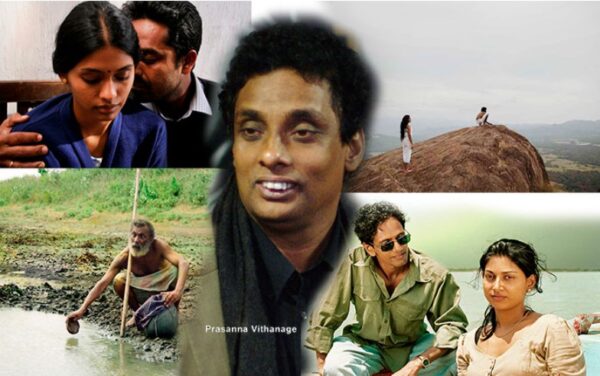
Source:Island
The films of Prasanna Vithanage come back to you long after you’ve seen them. They move you, chasten you, sometimes make you angry, and frequently make you question life. The characters in them are usually ordinary people: It’s the situations they are placed in that are extraordinary. As with the crusader in The Seventh Seal and the priest in Diary of a Country Priest, they encounter a moral dilemma that ends up testing their very souls.
Vithanage’s characters often fail these tests, though sometimes they win. Yet the payoff in these films comes from seeing not how they win or lose, but from how the world at large responds to their moral dilemmas. In Anantha Rathriya, to give just one example, Suvisal ends his friendships, even with the girl he intended to marry. He does so not just because he wants redemption for the sin of violating his servant, but also because everyone disagrees with his resolve to go out into the open and seek forgiveness.
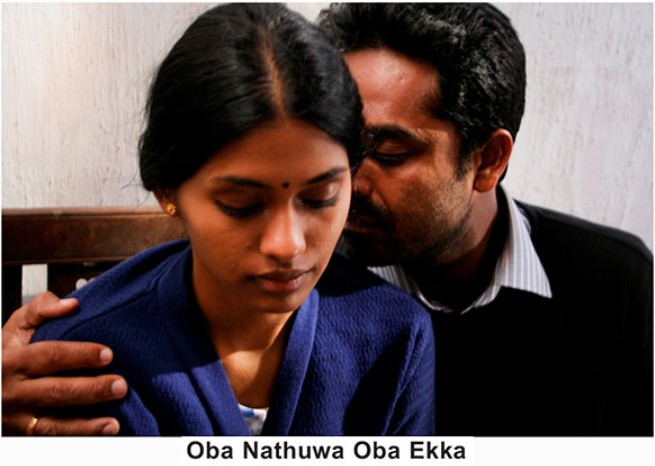
Nimmi Harasamaga’s character in Ira Mediyama also refuses to believe official accounts about her husband. Unlike the old man in Purahanda Kaluwara, the journey she undertakes to find out what happened to him is both physical and metaphoric. Suvisal informs us at the very beginning of Anantha Rathriya that he is going back to the past: Again, both physically and metaphorically. This is the fate that typically awaits Vithanage’s protagonists: They have to go back to their pasts to confront their sins. For Suvisal, the attempt is a failure; for the old man in Purahanda Kaluwara, it is not; for Nimmi Harasgama, it goes both ways.
But any hopes he may have had about reconciling with that servant, dissipates when she walks away from him. Vithanage does not give us a heroic ending. The simple truth is that his world has no room for heroes; as Suvisal’s girlfriend tells him, he wants to confess what he did not because of any remorse for his crime, but because of his desire to free himself from the memory of his rape. Defiant and angry, she tells him that he can never escape his past. To this Suvisal says nothing; he merely frowns at her.
Such dilemmas seem so convincing not because of the people who wind up facing them, but because of their impact on them. Not until the very last quarter of Anantha Rathriya, for instance, does Suvisal realise the full weight of his crime. When he does, he tries to release himself from the memory of his sin. The protagonist in Purahanda Kaluwara is desperate to know what happened to his son; like Nita Fernando’s Baba Nona from Paangshu, he refuses to believe the official record. His catharsis is considerably different from Suvisal’s: He goes to a water hole and stares at a group of children frolicking in a lake nearby. Blind and a little hard of hearing, he nevertheless smiles: Perhaps at the children, but more likely at having confirmed his suspicions, and at the hope that his son may be alive.
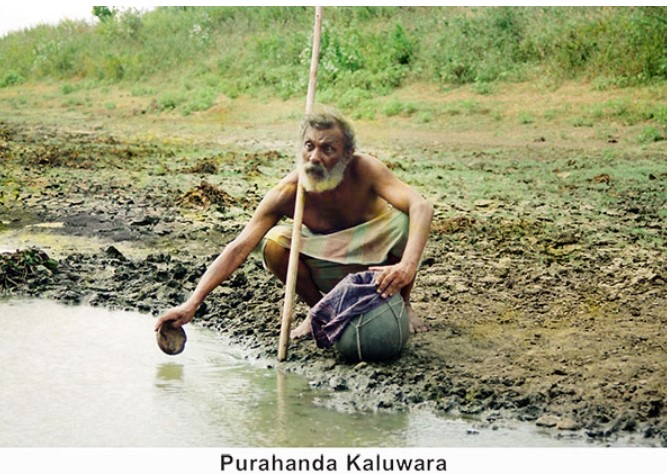
Yet the specificity of these locations belies a universality that transcends time and space. Hence Anantha Rathriya, though taking place during the second JVP insurrection, feels and looks contemporary. There is hardly any sense of time or place in Purahanda Kaluwara: The only object that offers a clue is the Grama Niladhari’s motorbike. Even then we are not sure when or where the story is taking place: The war seems a distant reality, its impact felt in the village only through the death of Vannihamy’s soldier-son.
At one level, Vithanage’s stories play out in specific locations: A drought-ridden village in the North-Central Province in Purahanda Kaluwara; Batticaloa and Colombo in Ira Madiyama; Bogawantalawa in Oba Nathuwa Oba Ekka. Vithanage frequently turns hills and mountains into metaphors; in his debut, Sisila Gini Gani, the mists and mountains form a crucial part of the story, and play a large part in the tragedy it centres on.
The very first shot of Anantha Rathriya shows us a misty hilltop. Interposed with the sound of beating drums, it ominously foretells what is to come. In roughly the same vein, the coldness of the romance in Oba Nathuwa Oba Ekka, between the pawnbroker and his wife, is echoed in the coldness of their surroundings. From misty mountains, Vithanage turns to sun-baked expanses as well, particularly in Purahanda Kaluwara and Ira Madiyama. He works with contrasts of atmosphere and weather: Misty or sun-baked, these places evoke the tensions of his characters, situating them in their surroundings.
In Ira Madiyama, Colombo and the Eastern Province conjure two different worlds.
In Akasa Kusum, this rift turns inward: Sandya Kumari loses her sense of time as she retreats to the past, fantasising about her stardom after a scandal puts her into the spotlight. Like Gloria Swanson from Sunset Boulevard, Malini Fonseka epitomises Sandya’s schizoid imaginings. When all romantic illusions are shattered in Oba Nathuwa Oba Ekka, similarly, the woman retreats to her fantasies. Betrayed by her husband’s secrets, she kills herself.
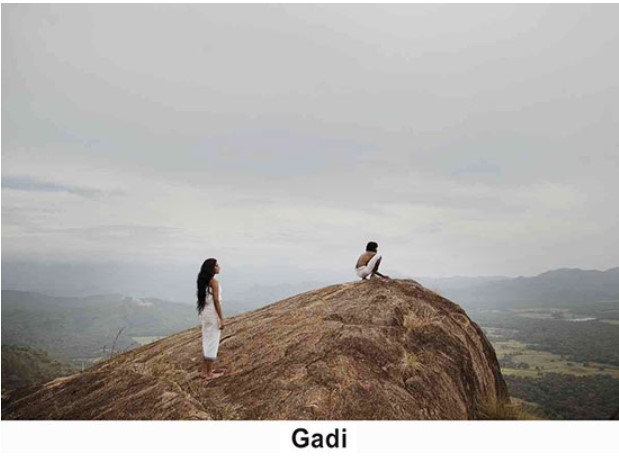
Curiously enough, in only two instances do these characters choose death or are pushed into it: The boy in Sisila Gini Gani and the woman in Oba Nathuwa Oba Ekka. The first death sets in motion the events of the film, while the second ends it. Vithanage tries to avoid this fate for his characters as much as he can. Thus, even on the verge of suicide, Nita Fernando retreats to a clandestine affair from the past in Pawuru Walalu. Like Blanche DuBois from A Streetcar Named Desire, she is saved by the kindness of strangers.
The tension between social reality and moral complexity is what determines the course of these stories. Vithanage’s characters resolve this tension in different ways: Most of them push themselves into the thick of things, while others try as much as they can to avoid them. Suvisal, for instance, takes up the advice his friend, a lawyer, gives him, and refrains from revealing himself. His prospects are too dear for him to lose.
Not until much later do we realise what he has staked until now: His wealth, his career, and his marriage. When he lets go, everyone he knows leaves him. That is what makes the final scene so searing, yet so fitting: Despite everything he gave up for the woman he raped, nothing can or will wash away the crime or his guilt. Like the hero (or antihero) of Tolstoy’s Resurrection on whom Suvisal’s character is based, he does everything, not for the love of this woman, but to atone himself. In Tolstoy’s novel the protagonist’s pursuit of atonement turns our attention to the sordid conditions of Tsarist Russia’s prisons and penal colonies. In Vithanage’s film, it turns the focus inward, to Suvisal’s conscience.
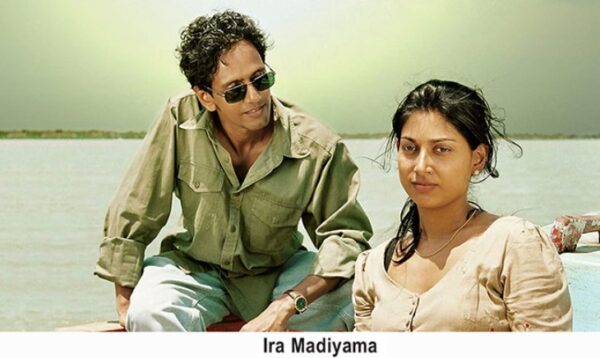
Enveloped by their desires, these characters evoke both pity and loathing. This is a quality few Sinhala films, among them those of Lester James and Sumitra Peries, possess; almost every work of Vithanage contains it. At once culturally specific and broadly humanist, they enrapture us in ways none of his contemporaries have been able to match.
The concept of sin and atonement looms large in Vithanage’s world. That has a great deal to do with his childhood and teenage experiences; as he recounted to the authors of Profiling Sri Lankan Cinema, while he grew up in a predominantly Buddhist and Sinhala atmosphere in Panadura, his neighbours happened to be Catholic. Waking up to the sound of hymns and sermons, he would invariably imbibe their world.
Later on, when he became enamoured of the cinema while still at school, he would return home, take a train back to Colombo, and make the acquaintance of Father Ernest Poruthota. There is thus something distinctly Catholic about his work, not just in the religious sense, but in the secular too: The catholicity of a perceptive and deeply sensitive artist.
Somewhere between Anantha Rathriya and Akasa Kusum, I grew up. These were formative years for Sri Lankan cinema. Difficult years, too: In the midst of a never-ending conflict, it almost went down under. Looking back, I can’t say I’m entirely satisfied with the trajectory of our cinema during the last decade of the war. Many daring films have come out, as have many daring directors. Yet not a few of them seem content in recycling the same motifs and themes, the same narratives and stereotypes, to the point of tedium.
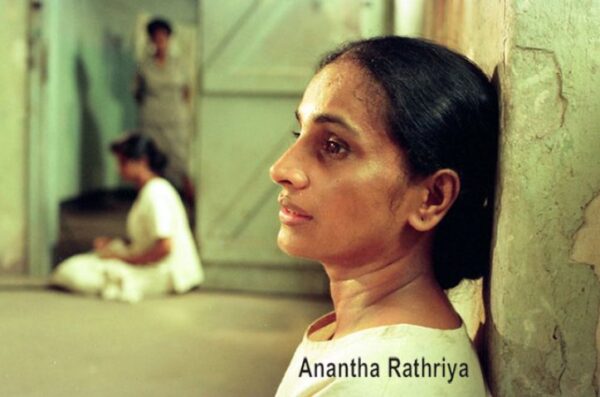
My fascination with Prasanna Vithanage’s oeuvre, in that sense, stems from a recognition of the fact that more than any of his peers, he has stuck to his guns and given us some highly original films. Not all of them can claim to be as good as his best, and yet, the best he’s given us so far convinces me that he’s the best our cinema has got. With another highly ambitious project, a tragic romance set in the twilight of the Kandyan kingdom, yet to come, I can only hope that he continues giving us more of the best, and more of the same.
(The writer can be reached at udakdev1@gmail.com)







